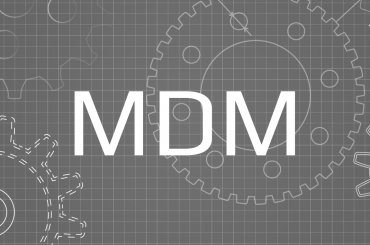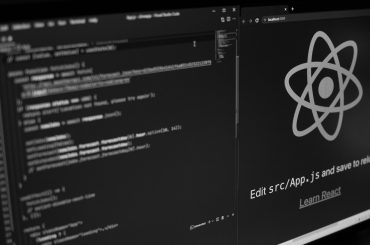Do you know whatever you do, from a single click on your keyboard to a social media post, a programming language is working behind each of your tasks? Interesting right? So how do you think it all started? To understand some things, one must know their origin and history. As a software developer, you need to know the history of programming languages.
So here, let’s discuss the history of programming languages and a few of the oldest programming languages in history.
“Did you know: Ada Lovelace invented the first-ever machine algorithm for Charles Babbage’s Difference Machine that laid the foundation for all programming languages.”
Ada Lovelace invented this in 1843. She wrote this machine algorithm on a piece of paper!
Her machine language algorithm laid the foundation for programming languages.
Later in 1944, Konrad Zuse developed the first ‘real’ programming language called Plankalkül. In 1949, there came assembly language, a low-level programming language that simplified the language of machine code. John McCauley suggested Shortcode, the first High-Level Language. In 1952 Alick Glennie developed the first-ever compiled language. Using a compiler, this language could be translated into machine language.
After this came a few important programming languages, which are the oldest ones and are still in use today.
1. Fortran
The Fortran Automatic Coding System for the IBM 704.
In 1957, John Backus designed and a team of developers from IBM under his leadership developed Fortran. It is the oldest programming language in use today. Backus first submitted the proposal for the language in 1953. In the later stages of its development, it was used on the IBM 704 mainframe computer.
Fortran IV and Fortran 66 are the two versions of Fortran which are still in use. Fortran 77, Fortran 90, and Fortran 95 are the most used versions.
Major Implementations: Absoft, Cray, GFortran, G95, IBM XL Fortran, Intel, Hitachi, Numerical Algorithms Group, Open Watcom, PathScale, PGI, Silverfrost, Oracle Solaris Studio, Visual Fortran
2. Lisp
Lisp is a family of programming languages. Released in 1958, designed by John McCarthy and developed by Steve Russell, Timothy P. Hart, and Mike Levin. It is the second oldest programming language still in use today. The design of this programming language was for easy manipulation of data strings. The best-known general-purpose Lisp languages are Racket, Common Lisp, Scheme, and Clojure.
Major Implementations: Racket, Common Lisp, Scheme, and Clojure
3. COBOL
In 1959, COBOL(Common Business Oriented Language) was released. Dr. Grace Murray Hopper was the developer of this language. Credit card processors, ATMs, telephone, and cell calls used to use this. Banking systems still use this language.
Major Implementations: GnuCOBOL, IBM COBOL, and Micro Focus Visual COBOL
4. BASIC (Beginner’s All-Purpose Symbolic Instruction Code)
The BASIC programming language was released in 1964. It was designed and developed by Dartmouth College students John G. Kemeny and Thomas E. Kurtz. As the language was easy to learn, it became popular among students who weren’t good at mathematics or computers.
This language was further developed by Microsoft and became the first marketable product of the company.
Major Implementations: Dartmouth BASIC, Applesoft BASIC, Atari BASIC, Sinclair BASIC, Casio BASIC, Microsoft BASIC, Liberty BASIC, PowerBASIC
5. Pascal
Niklaus Wirth in 1970 developed and designed PASCAL. This programming was popular among the students who were interested in improving their programming skills. It included good programming practices using structured programming and data structuring. In the late 1970s and 1980s, commercial softwares were written using Pascal.
Major Implementations: CDC 6000, Embarcadero Delphi, ICL 1900, Pascal-P, PDP-11, PDP-10, IBM System/370, VSI Pascal, Free Pascal, GNU Pascal
6. C
Dennis Ritchie in 1972 developed C. It was developed to use with the Linux operating system. C is based on an earlier language called “B”. Languages like C#, Java, JavaScript, Perl, PHP, and Python are all derivatives of C. Tech giants like Google, Facebook, and Apple still use C.
Major Implementations: K&R C, GCC, Clang, Intel C, C++ Builder, Microsoft Visual C++, and Watcom C
7. Smalltalk
1972 saw the release of Smalltalk. Alan Kay designed and Xerox Palo Alto Research Centre by Alan Kay, Adele Goldberg, and Dan Ingalls developed Smalltalk. Its commercial release was in 1980. Before this, only Xerox Alto computers ran this.
Major Implementations: Amber, Dolphin Smalltalk, GemStone/S, GNU Smalltalk, Pharo, Smalltalk/X, Squeak, VA Smalltalk, VisualWorks
8. SQL(Structured Query Language)
SQL, designed by Donald D. Chamberlin and Raymond F. Boyce and developed by IBM, was released in 1974. The purpose of SQL was to manipulate and retrieve data stored in IBM’s database management system.
Major Implementations: Amazon Aurora, Database Management Library, Google Fusion Tables, IBM DB2, IBM Lotus Approach, Microsoft Access, OpenLink Virtuoso, Oracle, and many more
These are the few oldest programming languages that are still in use. Apart from these, there have been many programming languages, to name a few :
Ada: 1980
C++, Ruby, Objective C: 1983
Perl: 1987
Haskell: 1990
Python: 1991
Java, PHP, JavaScript: 1995
C#: 2000
Scala: 2003
GO: 2009
Swift: 2014
Also read – https://deqode.com/blog/move-language-tutorial/






1 Comment
This article is worth sharing, so inspiring and full of information. Thankyou for sharing this!!